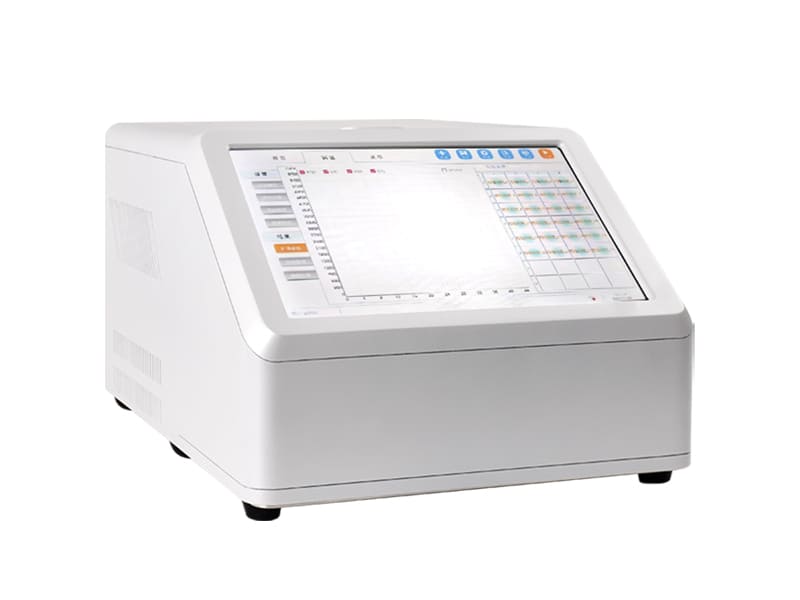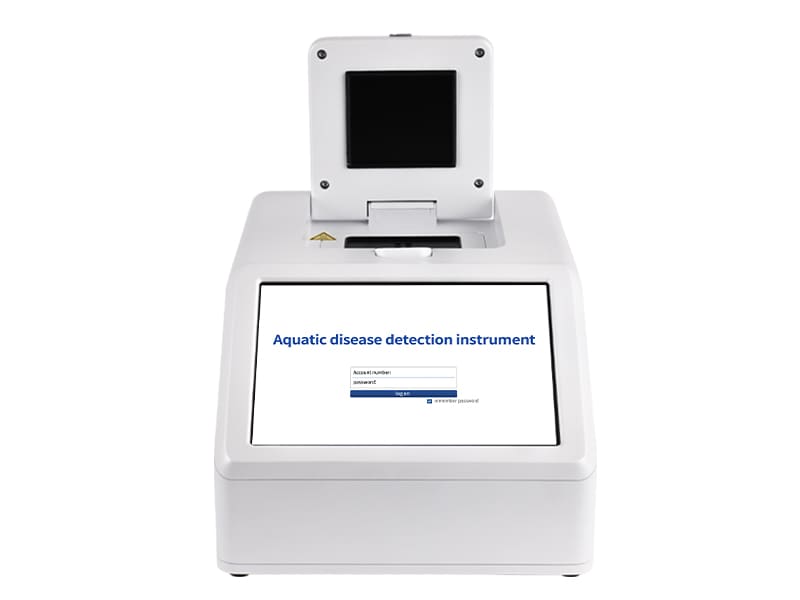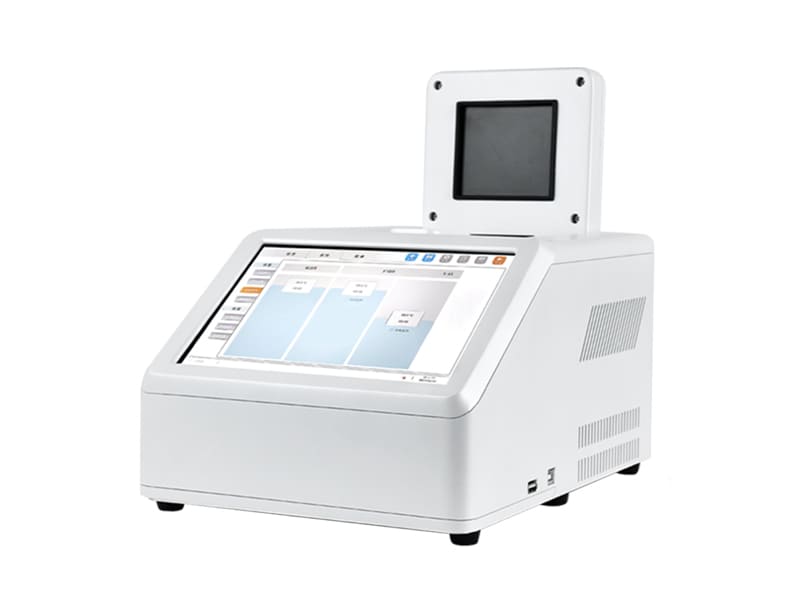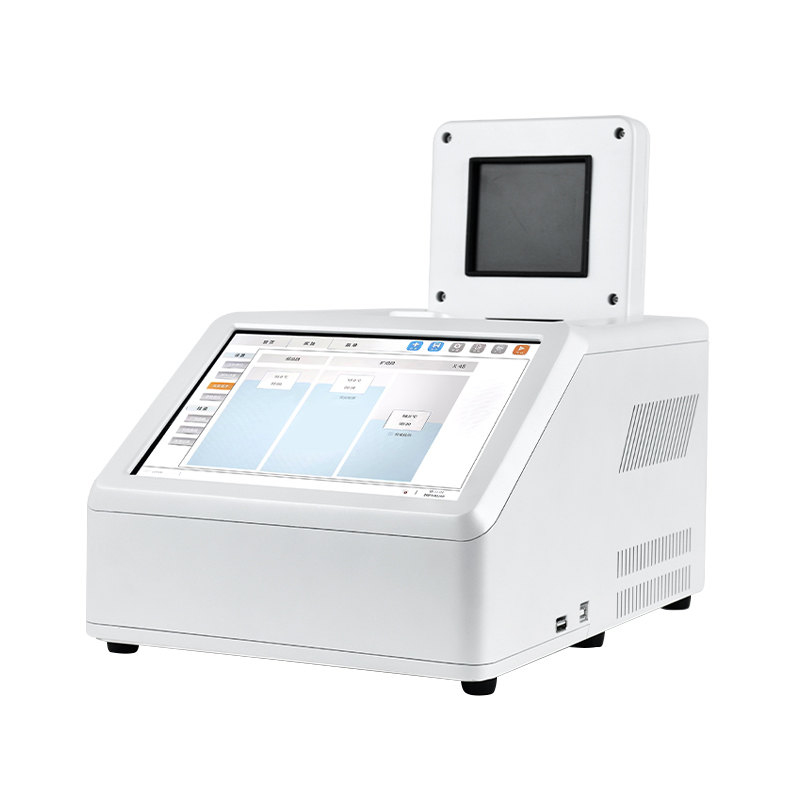
Overview:
The pine wood nematode detector is a device used to detect the presence of pine wood nematodes (Bursaphelenchus xylophilus). Pine wood nematode is a destructive plant parasitic nematode that can cause serious diseases of pine trees, especially pine tree species, leading to wilt and death. Early detection and monitoring are crucial for taking early prevention and control measures and mitigating the impact of the epidemic.
Detection steps:
Pine wood nematode detectors are usually based on molecular biology techniques and mainly include the following steps:
Sample extraction: Extract samples from suspected infected pine trees or wood. Samples can be tree trunks, bark, roots, sawn wood, or other plant tissues that may contain nematodes.
DNA extraction: Use appropriate methods to extract the DNA of pine wilt nematodes from the sample. This is to obtain genetic information of nematodes for subsequent molecular testing.
QPCR amplification: Using real-time quantitative polymerase chain reaction (qPCR) technology, specific amplification of pine wood nematode DNA is performed to determine the presence of pine wood nematodes in the sample, and the starting number of the target DNA sequence is quantitatively detected.
Basic structure of the instrument:
The pine wood nematode detector is an instrument for real-time detection of reactions, mainly composed of gene amplification thermal cycle system, fluorescence real-time detection system, microcircuit control system, computer and application software. Two core functional modules are the thermal cycling system and the fluorescence real-time detection system. The working principle of the gene amplification thermal cycle system is basically the same as that of traditional gene amplification instruments, using semiconductor heating and cooling to complete the thermal cycle process. The fluorescence detection system mainly consists of fluorescence excitation components, light signal transmission components, fluorescence detection components, and control systems.
Equipment parameters:
External dimensions: 235mm * 385mm * 175mm (width * depth * height)
Weight: 5.8kg
Electrical parameters:~220V/50Hz, 255W
Data interface: USB 2.0 * 2 (two on the right)
Environmental parameters:
Operating conditions: Temperature: 10-30 ℃, Humidity: 20%~80%
Transportation and storage conditions: temperature: -20~55 ℃, humidity: 20%~80%
Altitude:<2500 meters
Noise level: A-weighted,<60dB
Sample parameters:
Sample size: 48 * 0.2mL
Test tube type: single tube, eight row, 16 well test tube
Sample volume: 15-100uL
Temperature characteristics:
Heating/cooling method: semiconductor heating/cooling
Temperature range: 4 ℃ -99 ℃
Maximum heating rate: ≥ 3.5 ℃/s
Average heating rate: ≥ 2.5 ℃/s
Maximum cooling rate: ≥ 3.5 ℃/s
Average cooling rate: ≥ 2.5 ℃/s
Temperature control accuracy: ≤ ± 0.01 ℃
Temperature accuracy: ≤ ± 0.1 ℃
Temperature uniformity: ≤ ± 0.3 ℃
Optical properties:
Fluorescence detection channels: 4 channels
Light emitting device: High brightness LED
Daylighting device: high sensitivity, high signal-to-noise ratio photodiode
Adapting probes or dyes:
First channel: 470/520 FAM, SYBR Green
Second channel: 530/570 HEX, JOE, VIC
Third channel: 580/610 ROX, CY3.5, Texas Red
Fourth channel: 630/670 CY5
Detection sensitivity: 1 copy
Linear detection range: 100-1010 copies
Linear correlation coefficient: ≥ 0.999
Channel crosstalk: No crosstalk
Detection repeatability: ≤ 1.0%



 Current
Location:
Current
Location: +86 17853698681
+86 17853698681 WhatsApp
WhatsApp Product Details
Product Details Related Products
Related Products









